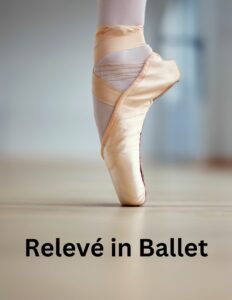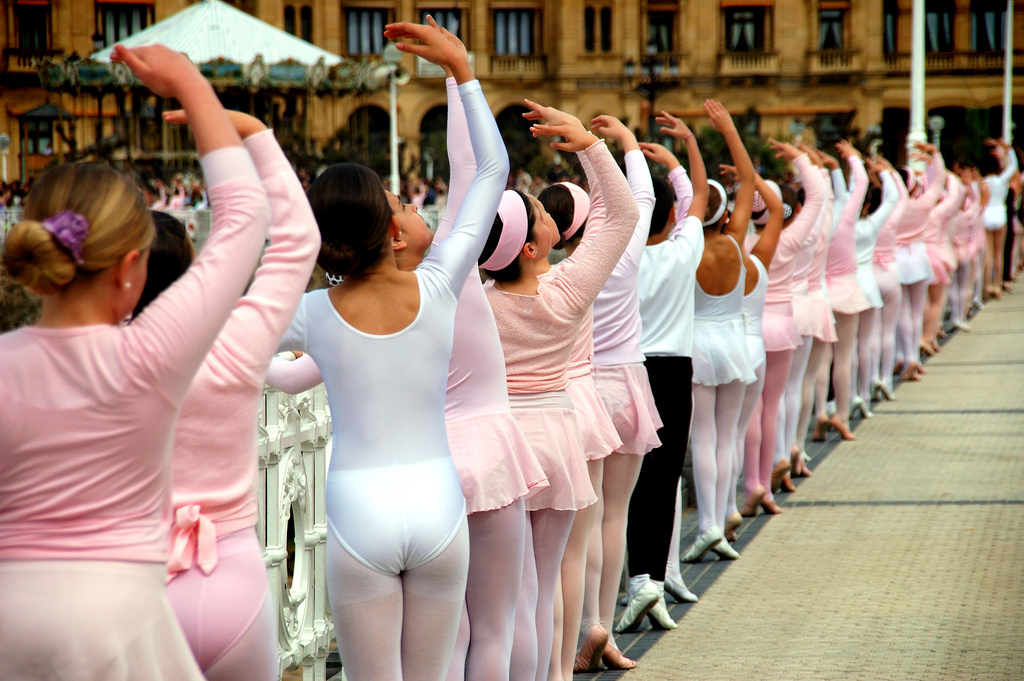Relevé in Ballet means raised in French.
In the world of ballet, the term “relevé” holds great significance. Derived from the French word meaning “raised,” relevé is a fundamental movement that ballet dancers execute by rising onto the balls of their feet.
This article explores the importance and benefits of incorporating relevé into ballet training, discussing its impact on technique, strength, artistry, and overall performance.
You raise yourself onto demi-pointe (on the balls of the feet) or full-pointe (on the tips of the toes). A demi plie usually precedes a relevé so that it looks as though the movement has a little spring, although the toes should not leave the floor. The legs are always straight with well-pulled-up knees while up in a relevé (unless the choreo requires bent knees).
It can be performed on one foot or both feet.
What Is The Purpose of a Relevé In Ballet

The main purpose of the relevé in ballet is to develop the leg muscles, especially the calves and the inner thighs. That is why dancers have such beautiful legs.
Relevé in ballet also prepares you for pointe work, as your feet and ankles are strengthened. Relevé is usually repeated many times and is very tiring for the dancer.
Relevé in ballet also challenges the dancer to hold the turnout, alignment, and pull-up when the heels are off the ground. Correct alignment of the body and engagement of core muscles is essential to execute a successful relevé.
Relevé is used by many dancers to practice their balance. Relevé in ballet can be done either at the barre or in the center. Improper execution can lead to strain on ankles, knees, and back, increasing the risk of injuries. Regular practice of relevé helps prevent ankle sprains and enhances overall foot flexibility.
A well-developed relevé provides stability during complex ballet movements, enabling dancers to perform with poise and control.
Dancers progress from basic relevé exercises to more challenging variations as they gain strength and technique. Advancement to full pointe relevé is a significant milestone for aspiring ballet dancers and often marks their readiness for pointe work.
The importance of the relevé in ballet cannot be overstated, as it not only enhances the aesthetic appeal of the dancer but also plays a crucial role in developing strength, balance, and technique. This article delves into the significance of the relevé in ballet, exploring its benefits, variations, and its role in the overall artistry of ballet.
How Can I Get The Most Out of a Relevé In Ballet?
Here is a comprehensive video that explains everything you need to know about the relevé and how you can perfect it.
- Before you go up think of pressing down into your heels.
- When doing a relevé in fifth position of the feet, squeeze the legs together as you rise to make it a cleaner and tighter position.
- Feel those thigh and gluteal muscles as you rise, and use them to develop them.
- Think of holding a coin between the tops of the thighs and not letting it drop.
- If going up on demi-pointe, make sure you are as far up as you can get on the balls of your feet without going fully on your toes. You should feel a stretch at the base of your toes.
- If going up into full pointe, make sure that the front of the foot is fully stretched, and that you are right on the top of the block of your pointe shoes.
- Think of snatching the feet up without them leaving the floor. The feet will retract in as you go up, about the length of your big toe.
- As you come down, do not let the upper body collapse. Keep it well-lifted.
- Don’t let the tailbone stick out as you come down, or before you go up.
- A good demi plie should precede the relevé and end the relevé.
- If using the arms in 5th, think of pulling the shoulder blades down your back.
The relevé in ballet stands as an essential technique that encompasses strength, balance, and artistic expression. From the development of ankle strength and leg muscles to the enhancement of balance and stability, the relevé offers countless benefits to ballet dancers.
Its variations, including demi-pointe and full pointe relevé, cater to dancers at different stages of their training. Moreover, the mastery of relevé not only improves technical skills but also contributes to the overall aesthetics and grace of ballet performances.
Aspiring ballet dancers and enthusiasts must recognize the importance of the relevé, dedicating time and effort to its practice in order to unlock their full potential in the world of ballet.

